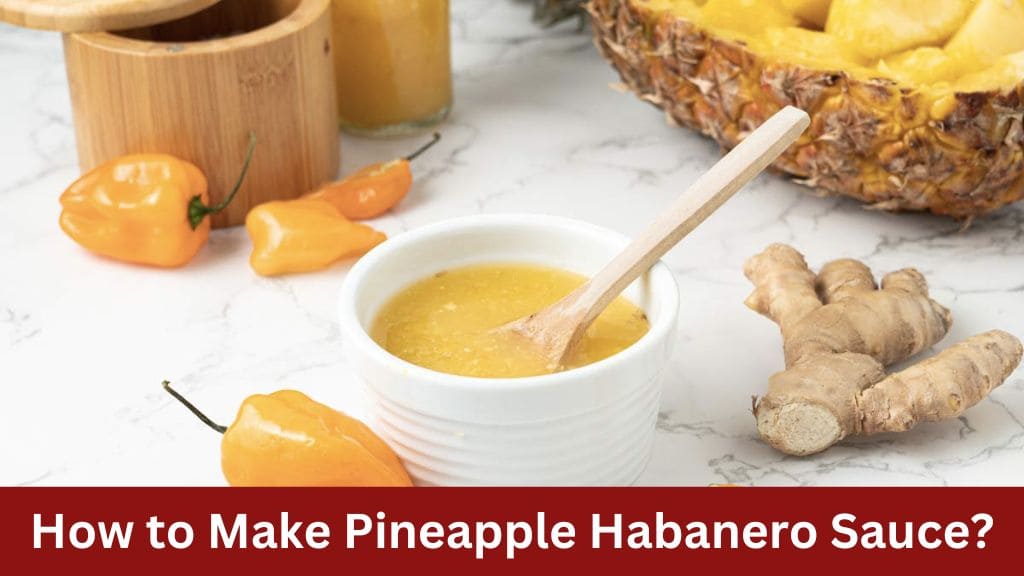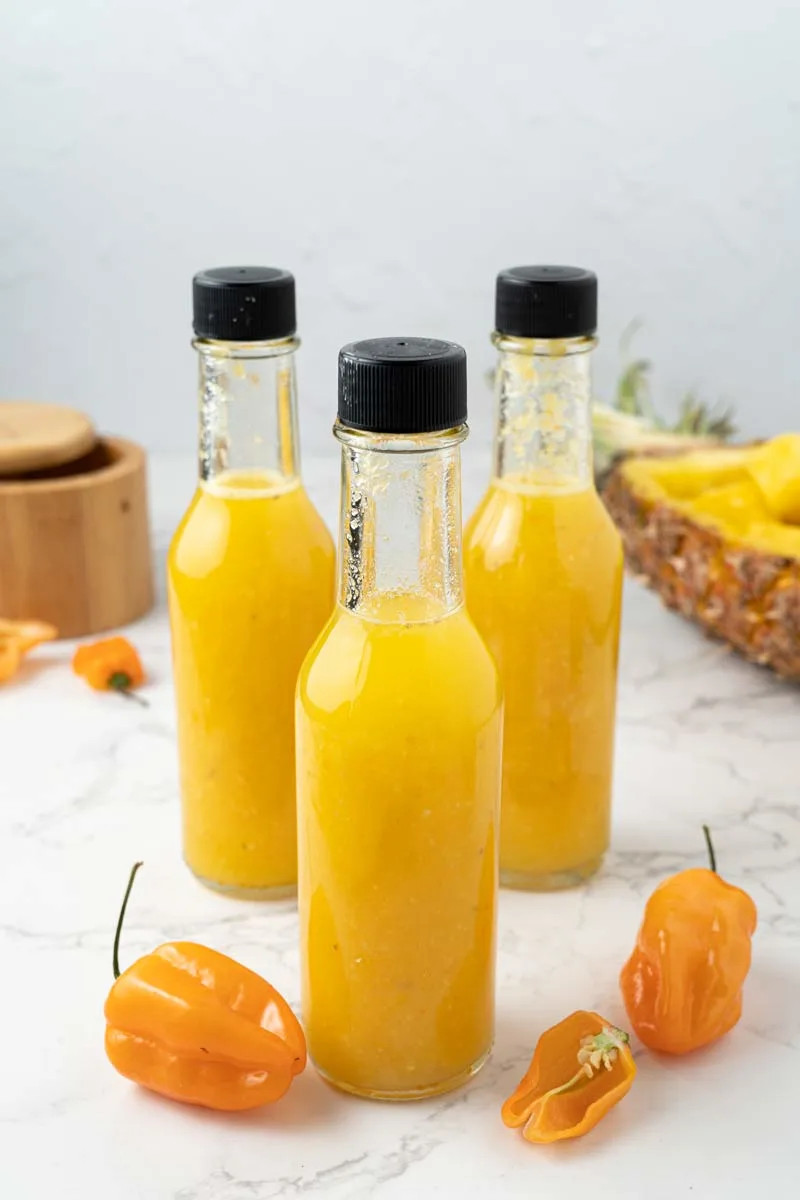Pineapple habanero sauce is a delightful condiment that adds a punch of flavor to a variety of dishes. This sweet and spicy sauce is perfect for those who enjoy a bit of heat with a hint of tropical sweetness. In this comprehensive guide, we’ll walk you through the step-by-step process of making your own pineapple habanero sauce at home.
Pineapple habanero sauce is a versatile condiment that can be used in a multitude of ways. Whether you’re looking to spice up your favorite sandwich, add a kick to your morning eggs, or elevate your grilled meats, this sauce does it all. The combination of sweet pineapple and fiery habanero peppers creates a unique flavor profile that is sure to tantalize your taste buds.
Ingredients

To make pineapple habanero sauce, you will need the following ingredients:
- 1 cup Pineapple: Use canned chopped pineapple packed in juice or fresh pineapple along with its juice.
- 2 Habanero Peppers: Handle with caution and wear gloves when handling these spicy peppers.
- 1/4 cup Yellow Onion: Adds depth of flavor to the sauce.
- 1 Carrot: Provides sweetness and helps balance the heat of the habanero peppers.
- 2 cloves Fresh Garlic: Enhances the overall flavor of the sauce.
- 1/2 cup Apple Cider Vinegar: Adds acidity and tanginess.
- 1 teaspoon Kosher Salt: Enhances the flavors and balances the sweetness of the pineapple.
Equipment Needed
- High-speed blender or food processor
- Cutting board
- Knife
- Measuring cups and spoons
- Glass jar or bottle for storage
Step-by-Step Instructions

1. Prepare the Ingredients
Before you start blending, it’s essential to have all your ingredients ready to go. Here’s what you need to do:
- Habanero Peppers: Carefully remove the top stems from the habanero peppers. It’s crucial to wear gloves while handling these peppers to avoid skin irritation or accidentally transferring the spicy oils to your eyes or other sensitive areas.
- Onion, Carrot, and Garlic: Peel and chop the yellow onion, carrot, and garlic cloves. These aromatics will add depth of flavor to the sauce.
- Pineapple: If you’re using fresh pineapple, chop it into small pieces. If you’re using canned pineapple, measure out the required amount along with its juice.
- Apple Cider Vinegar and Kosher Salt: Measure out the apple cider vinegar and kosher salt according to the recipe.
2. Blend the Ingredients
Once all your ingredients are prepped, it’s time to blend them together to create the sauce. Here’s how to do it:
- Combine Ingredients: Place the habanero peppers, chopped onion, carrot, garlic cloves, pineapple pieces, pineapple juice, apple cider vinegar, and kosher salt into the blender or food processor.
- Blend Until Smooth: Start blending on a low speed, gradually increasing to high, until all the ingredients are well combined and the sauce is smooth. Depending on your blender or food processor, this may take a few minutes. You want to achieve a uniform consistency with no large chunks remaining.
3. Adjust Consistency and Heat Level
After blending, you may find that the sauce is either too thick or too spicy for your liking. Here’s how to make adjustments:
- Thin Out the Sauce: If the sauce is too thick for your preference, you can strain a portion of the pulp using a fine-mesh sieve or cheesecloth. This will result in a smoother, thinner sauce.
- Adjust the Heat: If the sauce is too spicy, you have a couple of options. You can either use fewer habanero peppers in your next batch or remove the seeds and membrane from the peppers before blending. The seeds and membrane contain most of the heat, so removing them can reduce the spiciness of the sauce.
4. Store the Sauce
Once you’ve achieved the desired consistency and heat level, it’s time to store the sauce for future use. Here’s what to do:
- Transfer to a Container: Carefully pour the pineapple habanero sauce into a clean glass jar or bottle with a tight-fitting lid. Using a funnel can help minimize spills.
- Refrigerate: Store the sauce in the refrigerator when not in use to preserve its freshness and flavor. Fresh sauces like this one will not last as long as commercially bottled sauces, so it’s essential to consume it within two weeks.
- Label and Date: To keep track of when you made the sauce, label the container with the date of preparation. This will help you know when it’s time to use it up.
Serving Suggestions

Chicken Sandwiches
Spread a generous dollop of pineapple habanero sauce onto grilled or breaded chicken sandwiches for a burst of flavor. Pair it with a creamy mayo to balance the heat and create a mouthwatering combination. The sweetness of the pineapple complements the savory chicken, creating a tantalizing contrast of flavors and textures.
Grilled Steak
Elevate your grilled steak game by serving it alongside pineapple habanero sauce. The robust flavor of the steak pairs beautifully with the sweet and spicy notes of the sauce. Consider marinating your steak with a rosemary and garlic marinade for added depth of flavor before grilling. The result is a deliciously tender steak with a hint of tropical heat that will impress your dinner guests.
Breakfast
Start your day off right by incorporating pineapple habanero sauce into your breakfast routine. Drizzle it over scrambled eggs or use it as a dipping sauce for sausage or bacon. The spicy kick of the habanero peppers adds a wake-up call to your taste buds, while the sweetness of the pineapple adds a refreshing twist to your morning meal.
Other Proteins
Don’t limit yourself to just chicken and steak—pineapple habanero sauce pairs well with a variety of proteins. Use it as a topping for pork chops, fish fillets, tofu, or beans to add a burst of flavor to your favorite dishes. The versatility of the sauce allows you to experiment with different proteins and flavor combinations to create unique and delicious meals.
Roasted Vegetables
Give your roasted vegetables a flavor upgrade by drizzling them with pineapple habanero sauce before serving. The tangy sweetness of the sauce complements the caramelized flavors of roasted carrots, potatoes, or broccoli, adding a deliciously zesty kick to your side dishes. Simply toss your vegetables with a bit of the sauce before roasting for an extra burst of flavor.
Taco Salad
Take your taco salad to the next level by mixing pineapple habanero sauce into the dressing. The sweet and spicy flavors of the sauce add depth and complexity to the salad, creating a vibrant and flavorful dish that’s sure to impress. Top your salad with your favorite taco fixings, such as avocado, cheese, and crunchy tortilla strips, for a satisfying and delicious meal.
Nachos
Turn ordinary nachos into a gourmet appetizer by drizzling them with pineapple habanero sauce. The spicy heat of the sauce adds a kick to the cheesy goodness of the nachos, while the sweet pineapple flavor provides a refreshing contrast. Top your nachos with spicy pickled onions for an extra burst of flavor and crunch that will keep your guests coming back for more.
Cabbage Slaw
Toss shredded cabbage with pineapple habanero sauce and a neutral oil for a tangy and refreshing side dish. The sweet and spicy flavors of the sauce complement the crispness of the cabbage, creating a vibrant and flavorful slaw that pairs well with grilled meats, tacos, or sandwiches. Serve it alongside your favorite dishes for a refreshing and delicious accompaniment.
Conclusion
Making your own pineapple habanero sauce at home is easier than you might think, and the result is a flavorful condiment that will elevate your dishes to new heights. With just a few simple ingredients and a blender or food processor, you can create a versatile sauce that adds a spicy kick and tropical sweetness to any meal. Experiment with different serving suggestions and adjust the heat level to suit your taste preferences. Get creative in the kitchen and enjoy the delicious flavors of homemade pineapple habanero sauce!






